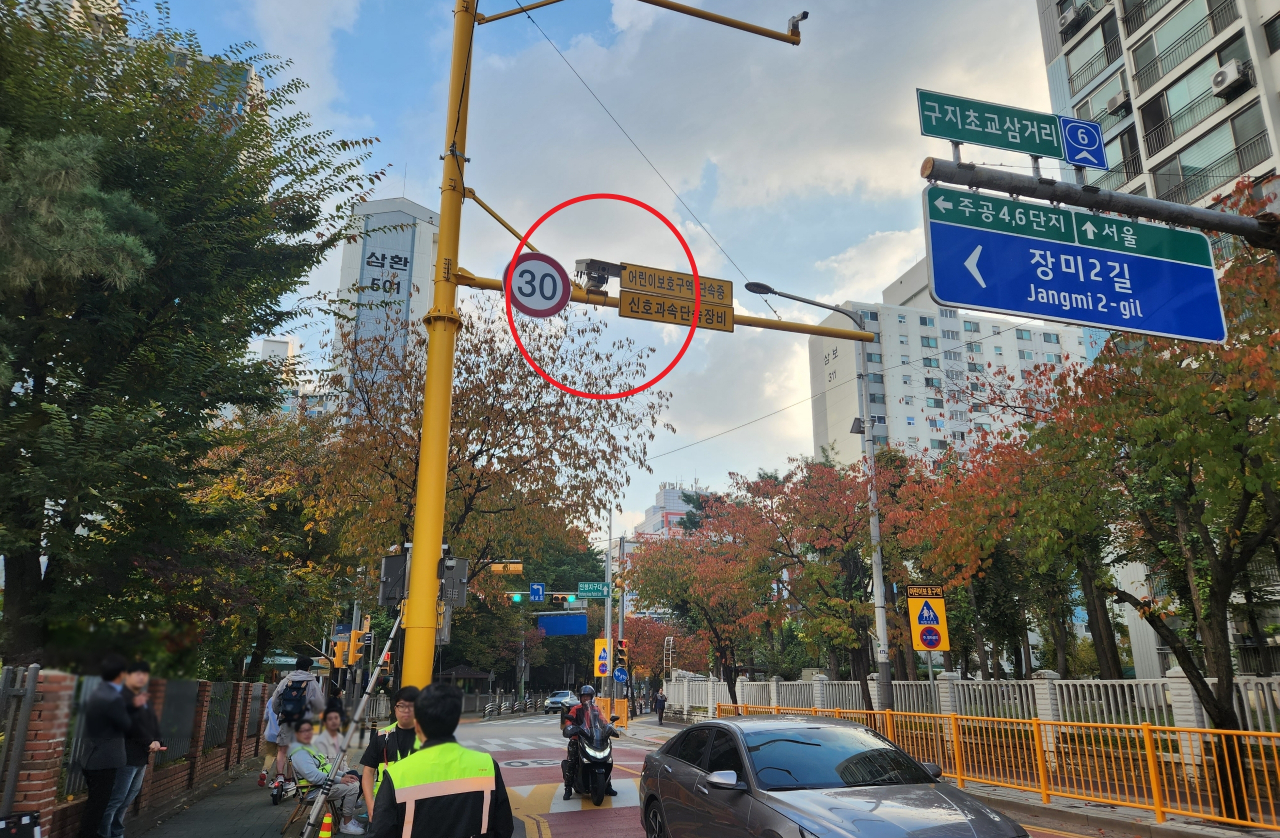More speeding tickets issued with bidirectional traffic cameras
By Lee Jung-jooPublished : March 14, 2024 - 14:59

A total of 2,018 cases of speeding and traffic signal violations were detected after bidirectional traffic enforcement cameras were installed in four locations across Gyeonggi Province, according to the National Police Agency on Thursday.
Bidirectional traffic enforcement cameras capture license plates on both the front and rear ends of a vehicle. These are different from the traditional kinds of cameras installed in most locations nationwide which are only capable of capturing license plates on the front of the vehicle.
According to police officials, a single device can identify the front license plate of an approaching vehicle and the rear license plate of a vehicle moving away, allowing for more effective enforcement of traffic violation cases for two-wheeled vehicles like motorcycles, which only have license plates installed on the back of the vehicle.
The new traffic enforcement cameras were installed for a three-month trial period from Nov. 13. They were installed near school zones in Yangju, Uijeongbu, Guri and Goyang in Gyeonggi Province.
Over the trial period, the bidirectional cameras caught a total of 1,849 cases of speeding violations, including 1,698 four-wheeled vehicles and 151 two-wheeled vehicles. Additionally, it also detected 169 cases of traffic signal violations, with 163 accounted for by four-wheeled vehicles and six by two-wheeled vehicles.
The Korean National Police Agency added that the number of two-wheeled vehicles caught for traffic violations over the past three months was “much more significant” compared to previous years. The number of four-wheeled vehicles caught also increased, likely because drivers often slow down only in front of the camera and accelerate rapidly as soon as the camera is out of sight, according to the police agency.
Police have been conducting formal crackdowns in the four locations since March 1. As of Tuesday, up to 399 speeding violations and 116 traffic signal violations were caught by the cameras.
The agency stated that it sent out a formal letter to each municipal office nationwide, mentioning the effectiveness of the bidirectional traffic enforcement cameras to promote the upgrade of all cameras to those with bidirectional functions.
“The agency will closely work with local governments to determine how many traffic enforcement cameras are needed in certain locations in each region,” a National Police Agency official said.






![[Weekender] How DDP emerged as an icon of Seoul](http://res.heraldm.com/phpwas/restmb_idxmake.php?idx=644&simg=/content/image/2024/04/25/20240425050915_0.jpg&u=)


![[KH Explains] No more 'Michael' at Kakao Games](http://res.heraldm.com/phpwas/restmb_idxmake.php?idx=644&simg=/content/image/2024/04/28/20240428050183_0.jpg&u=20240428180321)








![[Herald Interview] Mistakes turn into blessings in street performance, director says](http://res.heraldm.com/phpwas/restmb_idxmake.php?idx=652&simg=/content/image/2024/04/28/20240428050150_0.jpg&u=20240428174656)
